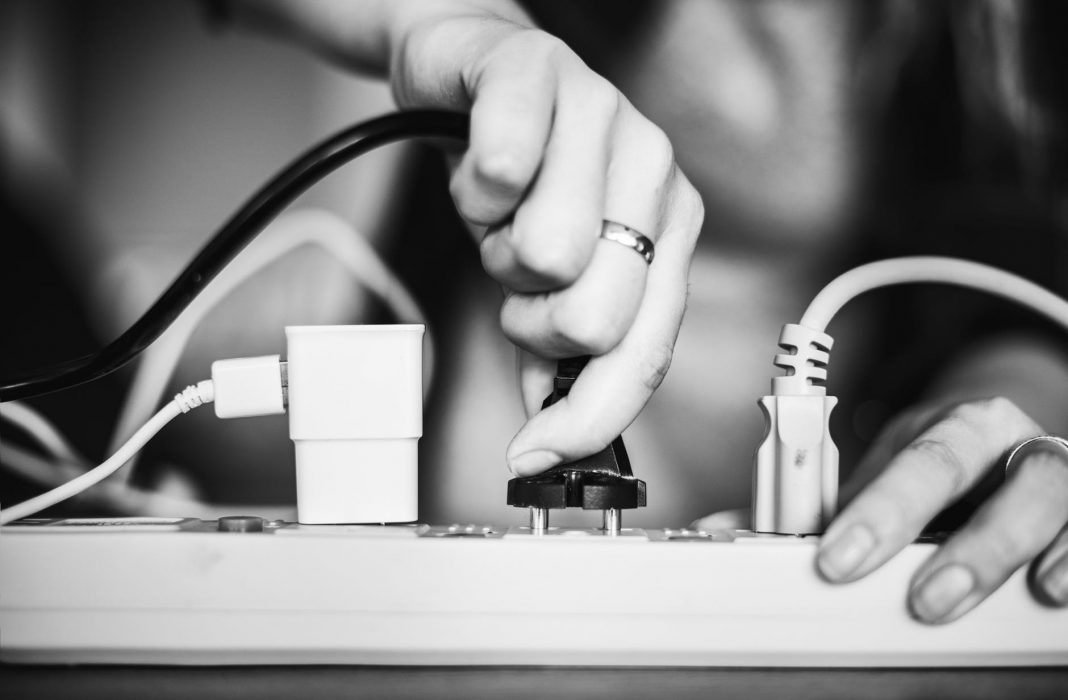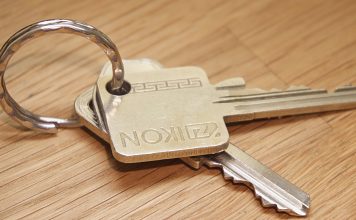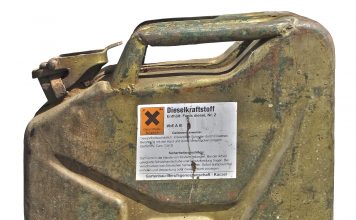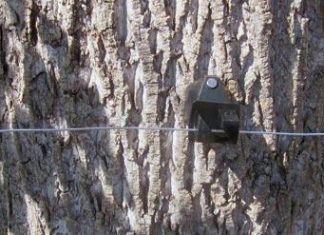 |
|
| Issue #82 • July/August, 2003 |
Now that the threat of terrorist sabotage to our utility infrastructure has been added to our basic concerns about storm related power outages, this may be the final straw in your decision to purchase a generator. If you are considering buying a generator for your home or farm, the first step is deciding what you want to operate when the power goes out. This will help determine the kilowatt (kW) capacity of the generator, the engine type (gasoline, propane, natural gas, or diesel), and installation wiring (plug-in or permanently connected).

6.5 kW contractor grade Yamaha generator
You also need to consider how often you will need a generator. If you live near a large city served by multiple power lines, power outages will be rare and last hours, not days. The more rural your area, the fewer the utility customers affected when a utility line goes down, and that means a long wait since utility crews will address those lines serving the most customers first.
Some parts of the United States historically have more storm related power outages than others. Northern states have more winter snowstorms, Eastern states have more ice storms, Southern states have more hurricanes and Western states have more tornadoes, earthquakes, and rainstorms. California has recently demonstrated that utility grid interruptions and brownouts are not always winter storm related. Do you live in an area that has a history of extended power outages? If so, then maybe it is time you did something about it and purchase a generator.
There are generally three categories of generators for the residential market, and each have very different capabilities.
Portable generator

1-kW lightweight, Honda portable generator
This is the typical portable 1-kW to 3-kW generator you find in most outdoor equipment and discount warehouse outlets. With few exceptions, these will have a small gasoline tank providing limited operating hours, a manual pull-starter, a handle for one person lifting, and a plug-in outlet panel to connect your electrical loads using extension cords. These generators have small lawnmower style mufflers which can be loud, and their lightweight construction and high 3,600 RPM engine speed limits their life to only a few seasons. Their main advantages are low cost ($400 to $600) and portability.
The portable generators in the smaller kW sizes are more suitable for camping, since they can only power a few lights, a small television, and several small appliances. The larger kW sizes have enough capacity to power a kitchen size refrigerator or well pump. These generators are not designed to be hard wired into your house wiring, and their higher noise levels and need for constant refueling reduces their desirability for a permanent back-up power system.
Contractor grade generator

Kohler automatic transfer switch
Although still considered a portable gasoline generator, most of these generators use heavier cast iron engines that will provide much longer life. These generators are in the 4-kW to 6-kW capacity range, which is only slightly larger than the portable generators above, but are designed for much heavier use. Most of these generators have a protective tubular steel cage with a top mounted oversized fuel tank for longer run times between fill-ups. Units above 6-kW usually have two-cylinder engines and electric starters. Expect to pay $1,200 base price for this size generator and over $2,000 for a larger electric start model. This is the minimum size and quality generator I would recommend for anyone wanting a do-it-yourself back-up power system for their home.
Residential backup generator
There is no pretense here; these generators are designed to be permanently mounted on an outside pad and hard wired into your home’s electrical circuit breaker panel. Although these are available with a standard gasoline engine, most are designed to run on propane or natural gas to eliminate the need to refill a fuel tank. These generators are also sold with long life diesel engines, but this will require keeping a fresh supply of diesel fuel available which may not be practical for some homeowners, although diesel fuel is safer to handle and more economical than gasoline.
These generators are available in any size you could imagine; however, 8-kW to 10-kW is considered the minimum size range for permanent residential back-up power applications. Expect to pay $4,000 to $6,000 for this size generator depending on quality and safety options, and more for a longer life diesel engine version. Once you make it past the initial price shock for a generator this size, you will be pleasantly surprised to find that the larger 12-kW to 16-kW residential models are not that much more expensive. If you need to power more loads at the same time like an air conditioner, central heating system, or electric hot water tank, then you may need a generator in this larger size range.
These permanently installed generators are much better suited for residential emergency back-up power systems than portable generators, since they include a sound absorbing weather-proof housing, a very good noise reduction muffler, and a slower 1800 RPM engine which greatly extends engine life. You will need a plumber to safely connect the unit to an existing natural gas or propane supply line, and an electrician to wire the generator to an electrical transfer switch which will be wired into your home’s main circuit breaker panel.
Transfer switches

8.5-kW propane-fueled Kohler generator
Of course you can drag your generator out of the garage during the next power outage and string multiple extension cords through an open window to your television, table lamps, and refrigerator. This can be very enlightening, especially during a rainstorm, as you trip over the kids and dog in the dark while stringing wet extension cords from one end to the other.
Up until a few years ago most transfer switches were large and costly, and only found on large commercial back-up generators serving hospitals, schools, and airports. These large devices are designed to constantly monitor the utility grid for a power outage, automatically start the generator, and safely transfer the emergency loads over from the grid to the generator. These automatic transfer switches also have a programmable timer to start and exercise the generator several times each month to keep everything operational, and provide operator warning alarms if the generator fails to start or has a service problem.
With the recent trend in more and more owner’s of upscale homes and home-based businesses demanding their own reliable backup power system, manufacturers are now offering a much less expensive manual version of these transfer switches. Although manually operated transfer switches do not include the automatic generator start capability, they can be easily added to your home’s electric panel. Since it is not practical to install a generator large enough to power everything in your home at the same time, these smaller manual transfer switches have multiple three-way switches to allow transferring individual electrical loads between the generator and utility grid, depending on which loads are the most critical at a given time. This allows using a much smaller generator, without the danger of overloading that would occur if all of the appliances were connected at the same time.
Most manual transfer switch panels are sold with an extra long heavy duty cable and plug that allows connecting the transfer switch directly into the generator’s power receptacle without the need for hard wiring or generator modifications. Although a manual transfer switch may add $200 to $400 to your generator installation cost, depending on size and quality, it is well worth the price if you are serious about a back-up power system. When the next power outage occurs, you still may need to manually start the generator, but switching your critical loads over is now safe and easy. No more extension cords and open windows with exposed wires running outside in the rain. Some transfer switches are available with dual meters to help balance the loads on each output leg of your generator.

GenTran manual transfer switch with individual load controls
I am reluctant to mention the cheap version of connecting a generator to a home’s power wiring without a transfer switch, but I feel it is necessary to highlight the danger of this technique. Almost everyone will have a brother-in-law who thinks they are an electrician, who wants to make a double ended dryer outlet extension cord for your portable generator to save money. My advice is do not ever think about it. This old trick uses an electric cable with a male plug on both ends that connect the generator’s 240-volt outlet with your three-bladed electrical dryer receptacle.
This routes all of the generator’s output directly into the electric buss bars inside the main circuit breaker panel of your home. However, your electric meter, all other electric loads, and the utility grid are also connected to this same electric buss. Since most people have a limited understanding of how their electrical service operates, they will not recognize the need to turn off the circuit breakers to all larger appliances like electric stoves and air conditioners, which almost guarantees they will overload the generator which is “back-feeding” their electrical panel through the dryer outlet.
They will also forget to switch off their service disconnect, guaranteeing the utility power will feed back into the generator as soon as the grid is re-energized. Every year there are hundreds of portable home generators that become fireworks displays in the backyard when the utility grid comes back on, not to mention the potential to also burn down the house. Since both the generator and the clothes dryer have “female” 240-volt receptacles, this requires both ends of this homemade cable to be “male,” with electrically energized exposed blades that you could accidentally come in contact with prior to plug in.
Do not take the risk. Purchase a manual transfer switch with any 3-kW to 6-kW portable generator, and an automatic transfer switch for all larger pad-mounted generator installations.
One of the main problems with using a generator today is all the new electronic and computer equipment we all own which require a very stable voltage source that is free of electrical line “noise.” Older and lower-cost generators cannot always provide this clean electricity, since their supply voltage will keep changing as the generator’s engine adjusts to meet the switching load demands. Appliances in the United States are designed to operate on 60-cycle pure sinewave 120-volt AC power.
If you could view this on an electronic scope, you would see the utility grid voltage rise smoothly up to a peak, then reverse to peak again in the opposite direction, 60 times every second, rising and falling smoothly like waves on a pond. The 120-volt measurement is the average of this constantly changing voltage wave form, and the maximum peak-to-peak voltage is actually closer to 169 volts.
Some lower-cost generators use voltage controls to increase their advertised peak load capacity by reducing this peak voltage as the load increases. You would still measure 120-volts AC with a volt meter when this happens, and most lights and small appliances would not notice the difference, but some types of motors may run slower, and almost all battery chargers will experience a significance loss in performance since these devices need the full peak voltage to operate properly.
Generator manufacturers have started to address these power quality issues by offering models that include a true sinewave inverter added to the generator’s output circuit. These inverter generators or “I” models, provide grid quality sinewave output with a rock stable voltage throughout the full capacity range of the generator. Although this feature adds significantly to any generator’s base price without increasing its total kW capacity, this generator feature is desirable if you are planning to charge a backup battery bank or power electronically sensitive computer or audio video equipment.

Schematic wiring diagram with only power wiring shown. Grounding and neutral wiring also required. All wiring must be per National Electric code and all equipment must be UL labeled.
Generator load estimating
As mentioned earlier, it is not practical to install a generator that can equal the capacity of the utility grid supplying your home. This is not even done for commercial or institutional back-up power systems, which have only critical loads powered by their generator. These large emergency generators are normally only used to power emergency lighting, phone and fire alarm systems, and the pumps and controls needed to keep the heating system functioning normally. These generators are rarely sized to also power large central air conditioning systems, except for hospital operating rooms, micro-electronic clean rooms, and critical computer rooms. Just like the large system designer, you need to decide what electrical loads are absolutely necessary to remain operational in your home during an extended power outage, which will determine your generator size.

Most engine driven generators have a “stepped” linear relationship between their loading and their fuel consumption. Most lightly loaded generators will consume the same fuel from no load up to about 25 percent loading. Above this point, the fuel consumption will increase at the same percentage as the load up to about 75 percent of full load. Above this generator loading, the fuel consumption will increase at a higher rate than the load. The 50 to 75 percent load range appears to be the most fuel efficient operating range for most generators, and it should be clear that it is not fuel efficient to operate an 8-kW generator just to power one table lamp. This load-fuel relationship should be considered when selecting the loads that will be supplied by your generator, and when selecting the generator size matching this operating range.
Using the table of appliance wattage estimates, make two lists. Keep in mind that these are average values and you should verify the nameplate data on your own appliances if in doubt. Your first list will be the total wattage of all lights and appliances that must operate at the same time. Your second list will identify all larger electrical loads you may also like to supply, but are not required to operate while these more critical loads are on. This will help determine how many separately switched circuits you will need on any transfer switch, since these loads must remain off until they can be operated when all other loads are off.
An example of these less critical electrical loads would be a clothes washer, an electric hot water heater, a small window air conditioner, or a dishwasher. Although these loads could easily require all of the output of a smaller generator, you may be able to heat up the water tank from the generator and operate a washer later at night when all other loads are turned off. Remember that a water heater and well pump are usually 240-volt loads, and will require different switching and wiring than your 120-volt loads.
Generator load balance
Most generator nameplate ratings are their maximum peak capacity, which must be de-rated if the loads are continuous or consist of many separate appliance motor loads that will be randomly starting and stopping. Be sure to take this into consideration when making your final generator selection. Also note that most back-up generator capacity ratings are based on a balanced loading of their dual leg 120/240-volt output. This means that each 120-volt side of any 240-volt generator output is designed to supply half of the total nameplate wattage. A 4-kW rated generator may only have 2-kW capacity supplying each of its two 120-volt circuits. If all of your connected loads are 120-volt, then these loads should be equally divided between these two separate branch receptacles. If all of your electrical loads are connected to the generator with a single two conductor extension cord, your generator may only be able to supply half of its nameplate rating through this single cord.
Most generator panels have multiple receptacles on separate “legs” of the generator’s windings. Be sure to take advantage of these multiple outlets by using two or more extension cords to supply your loads which will help balance the generator’s dual voltage output. I have noticed that some portable generators now include a 120/240-volt load switch on the generator’s receptacle panel to do this load balancing for you. When you will not be powering any 240-volt loads, this switch will combine the separate generator windings so almost all of the nameplate rating capacity will be available to the dual 120-volt duplex outlets.
Larger generators have a two-pole 240-volt circuit breaker instead of a receptacle panel to allow hard wiring the generator’s output directly to your home’s electrical service panel. If you will be using this type of wiring connection, try to make sure the individual load circuit breakers are divided equally to each side of this dual pole circuit breaker. All 240-volt generators need a fairly balanced loading on each 120-volt output leg to achieve their nameplate rating.
Conclusions
|
The purpose for buying an emergency generator is to have electricity during an emergency. I know that may sound obvious, but every year I hear about the guy who ran out and bought the first generator he could find when a snow storm was forecast, only to find out days later that it would not run without gasoline. Gasoline stored in a container or fuel tank will go “stale” after a few months, and your local gas station will also most likely not have power when you are without power. This means your generator will only run a few hours on the gas remaining in its tank if you have not planned ahead.
In order for this to be a truly reliable emergency power system, you need to have the fuel on hand to operate your generator for several days. You should rotate your gasoline or diesel fuel every few months, and make sure it is stored in a safe place. It is also much easier to store, rotate, carry, and refill the generator’s tank from several smaller fuel storage containers than one large one. For example, my generator has a five-gallon fuel tank, so I keep four full five-gallon fuel storage containers on hand, but keep the generator’s tank empty to avoid its fuel going bad which would require draining and re-filling before it could be operated.
Using the same size fuel storage container as the generator’s tank capacity makes for smoother re-fill operations, especially when standing in the rain or snow. I use the oldest fuel first to fill other motorized yard equipment and rotate the numbered containers as they are refilled. You should consider adding a fuel additive to all standby gasoline and diesel fuel storage containers to extend their shelf life, but this still only adds months, not years to their useful life.
Buying a propane or natural gas fueled generator will eliminate these problems since these fuels do not go stale. However, all generators need to be started and run once or twice each month to circulate their lubricants, drive off damaging moisture, and charge their starter batteries. Do not expect a generator that has been stored in the garage for over a year to start on the first pull, and don’t expect it to run with two-year-old fuel in the tank.
Regular monthly testing and running your generator, annual oil and filter maintenance, and keeping insects and rodents from building nests in the air intake is an integral part of keeping your generator ready for an emergency.
Having a portable generator and the fuel to operate can be a real life saver during a week-long power outage, but having an automatic start generator and hard wired automatic transfer switch can be downright decadent.
[weaver_widget_area id=’articles_about_yago’ class=’text3′]














